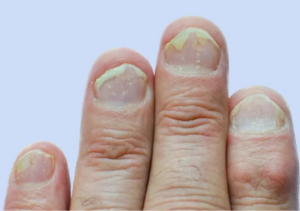Nail psoriasis is a common condition affecting individuals with psoriasis, a chronic autoimmune disease. It leads to various changes in the appearance and texture of the fingernails and toenails. Nail psoriasis can cause discomfort and impact the quality of life, making early diagnosis and management crucial.
Causes of Nail Psoriasis
- Autoimmune Response: Nail psoriasis is an autoimmune condition where the body’s immune system mistakenly attacks healthy nail cells, leading to abnormal nail growth and appearance.
- Genetics: A family history of psoriasis increases the risk of developing nail psoriasis.
- Environmental Factors: Certain triggers such as infections, stress, and injuries can exacerbate psoriasis symptoms, including those affecting the nails.

